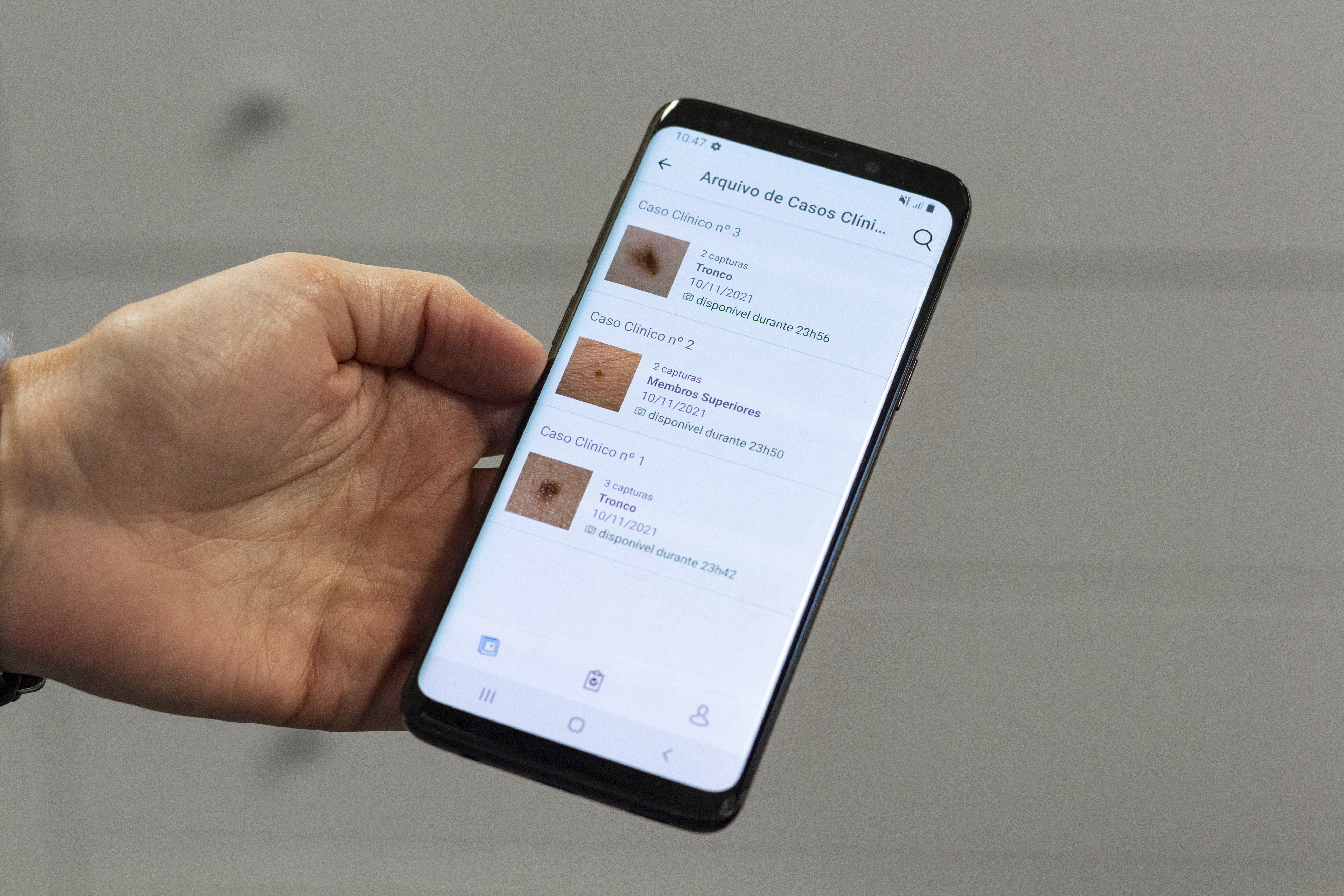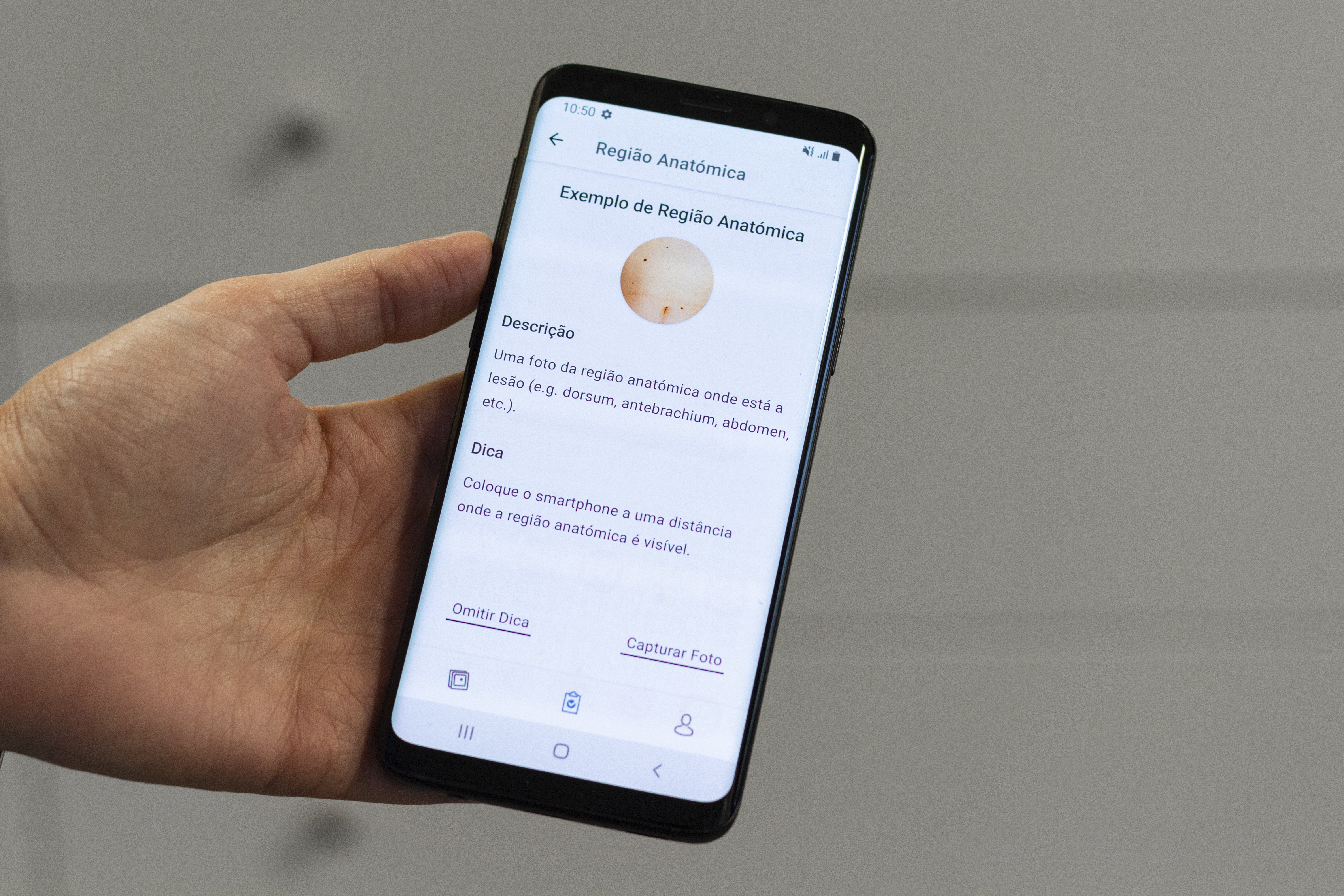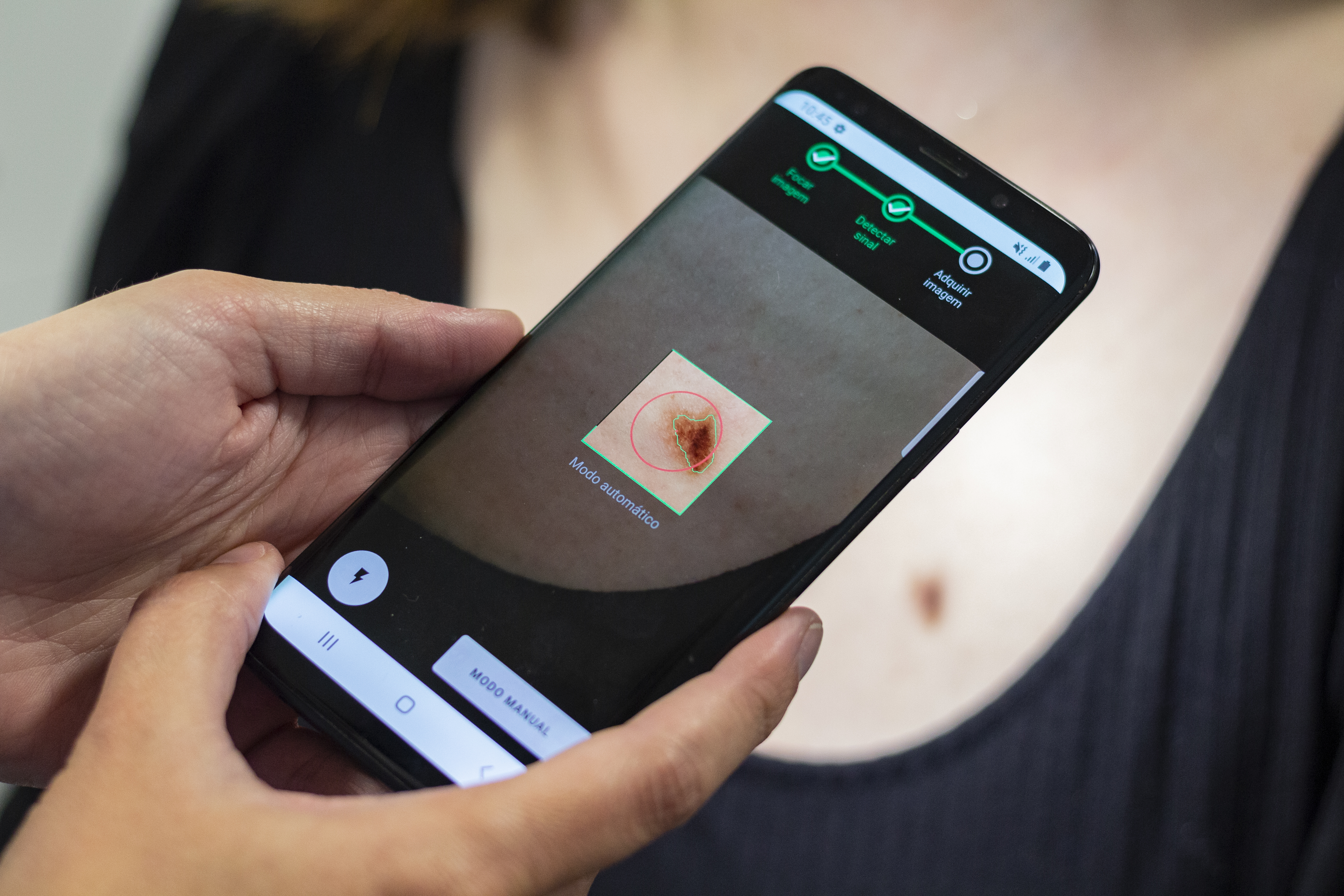Derm.AI: A faster way to detect skin cancer
In skin cancer, early diagnosis can be life-changing. The Derm.AI app enables GPs to get to the bottom of suspected cases faster.
Interview with Maria Vasconcelos on Derm.AI
The Portugal-based project “Derm.AI – Usage of Artificial Intelligence to power Teledermatological Screening”, referred to as project DSAIPA/AI/0031/2018, is supported with national funds through the ‘FCT – Foundation for Science and Technology’. This initiative was established within the scope of the program titled: “Projects of Scientific Research and Technological Development in Data Science and Artificial Intelligence in Public Administration 2018”. It is coordinated by Fraunhofer Portugal AICOS and developed in partnership with the Shared Services of the Portuguese Ministry of Health, and clinical partners IPO Coimbra, CHUP, and ULS Guarda.
esanum: Where did the idea come from to create Derm.AI, an app that helps physicians detect skin cancer?
The Derm.AI project, which includes both mobile app and the decision support framework, arised from several conversations with physicians from the Portuguese National Health System that work with a dermatological tele-referencing program.
esanum: How exactly does Derm.AI make it easier for primary care physicians to recognize suspected skin cancer cases? How does communication with other colleagues work?
The mobile app does not provide feedback to primary care physicians. The Derm.AI project aims to improve the existing teledermatology processes taking place between Primary Care Units (PCU) and Dermatology Services in the Portuguese National Health System for skin lesion referral.
We envision two major goals. First we aim to support physicians in PCUs through the development of a computer vision-based mobile application that fosters image acquisition standardization (i.e. mobile app); and second, we want to assist dermatologists in the referral process for booking specialist consultations in the hospital through the adequate prioritization of cases (decision support framework).
Primary care physicians use the mobile app to acquire the images; meanwhile, hospital-based dermatologists use the decision support framework integrated in the referral system to access both the information of the cases and a risk assessment (ranked accordingly to “normal”, “priority” or “high priority”) to help to prioritize the order in which any potential cases are to be examined.
esanum: Where does Derm.AI get the data for image evaluation from?
In order to build the mobile application algorithms that facilitate the image acquisition process, FhP-AICOS used internal datasets of macroscopic images for image quality assessment, and also public datasets for the segmentation of lesions.
To build the decision support framework, we had access to anonymized retrospective data from the Portuguese National Health System related to the referral requests from Local Health Care Units for the first Dermatology Hospital consultations.
esanum: How involved were practicing physicians in the creation of the app?
Clinicians were involved through the creation of both the mobile app and the decision support platform. General and family medicine physicians were involved in a 10-month trial to assess the usability of the mobile app and dermatologists were involved throughout the construction of the decision support platform in regular meetings.
esanum: Is Derm.AI designed as an international app?
Derm.AI was developed in partnership with the Shared Services of the Ministry of Health in Portugal to integrate the software with the current dermatological tele-referencing program in place. The dermatological data used concern Portuguese use cases and population. Thus, adaptations and tests should be needed for the results to be used for different populations.
You can read the German version of this interview on esanum.de


